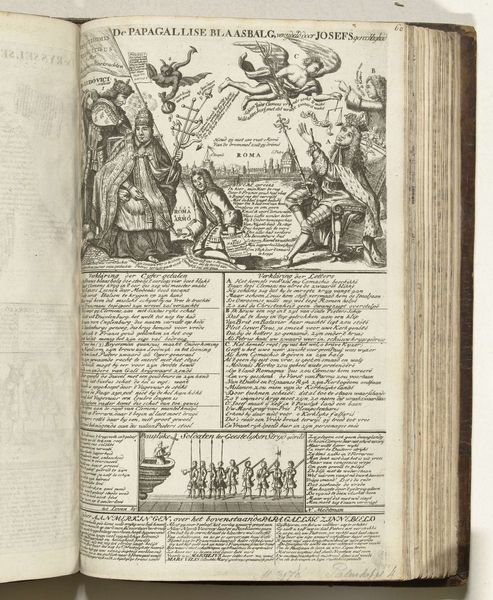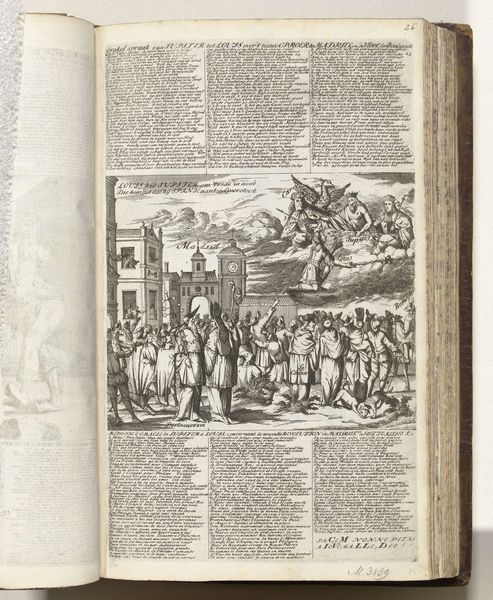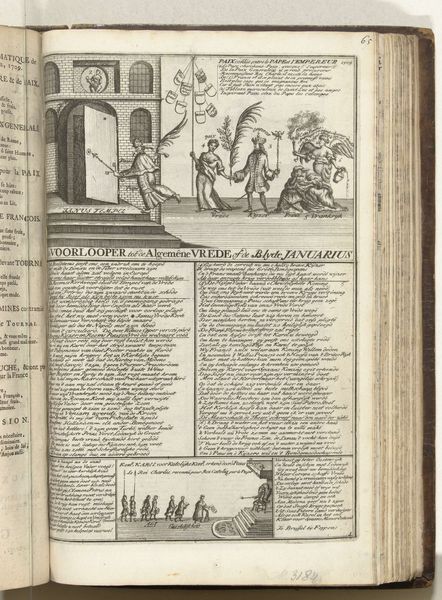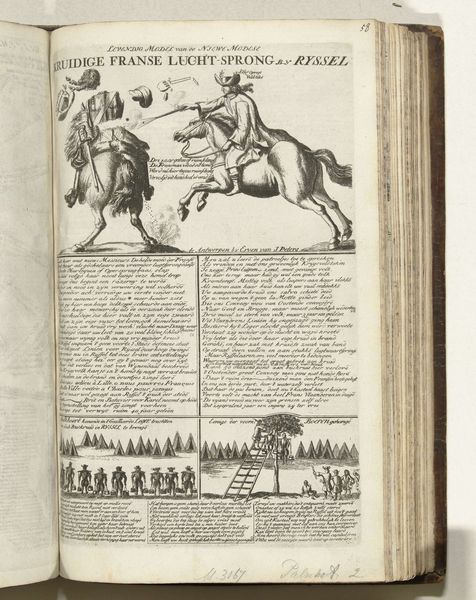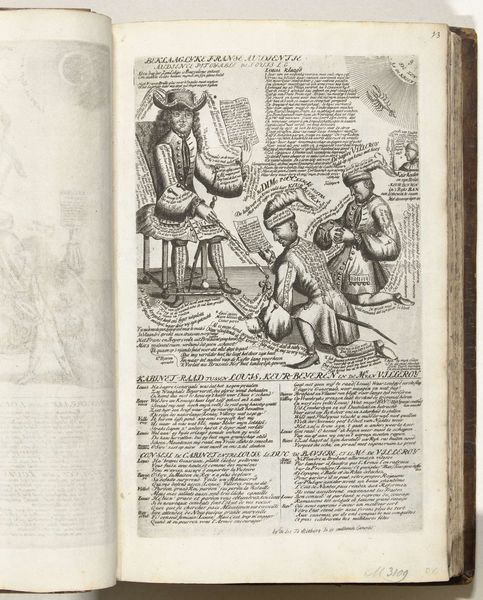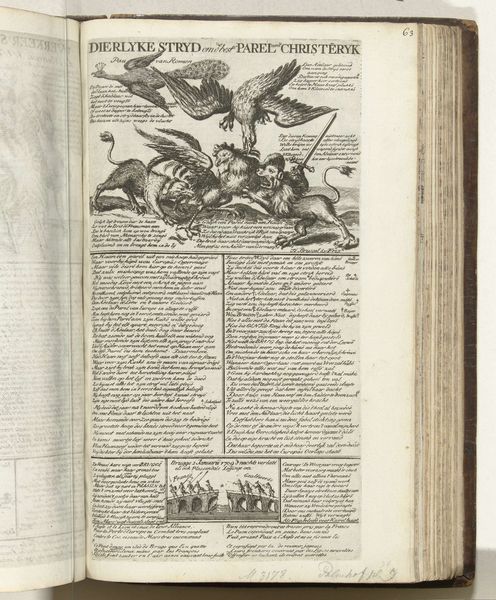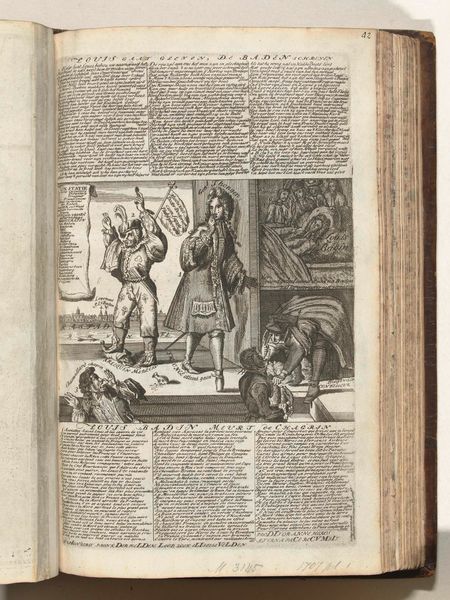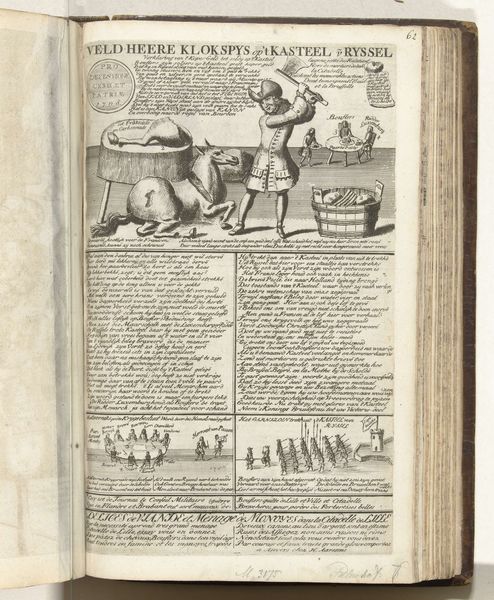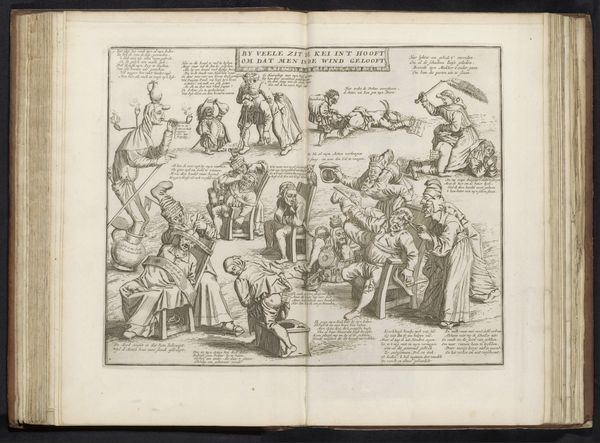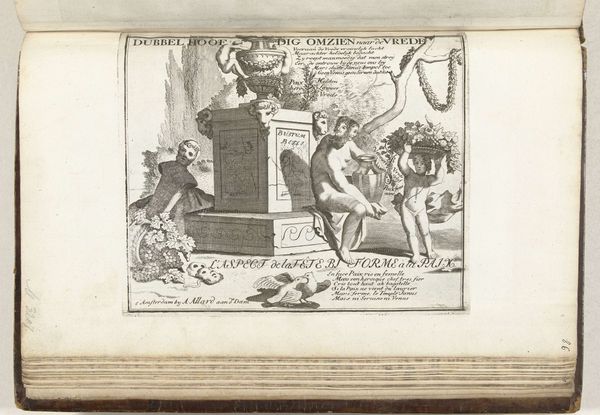
print, engraving
#
narrative-art
#
baroque
# print
#
figuration
#
history-painting
#
engraving
Dimensions: height 315 mm, width 200 mm
Copyright: Rijks Museum: Open Domain
Curator: Right, let’s talk about this striking print. It's called "Spotprent op het Franse verlies van Doornik, 1709," essentially a satirical print about the French loss of Tournai, created around 1710 by Abraham Allard. It’s an engraving, which means it would have been relatively easy to produce and distribute widely at the time. Editor: Oh, wow, it's bursting with... anger? Melancholy? It's chaotic yet controlled. The figures, they look so defeated, like shadows amidst swirling papers and fiery blasts. What is all that paper they’re brandishing? Curator: Those papers likely represent capitulation documents, which is why they’re being waved like white flags—well, papers surrendered in defeat, at any rate! Allard's playing on the political mood after the French lost the city of Tournai during the War of the Spanish Succession. Notice how the central figure seems to be warding off some underground fire. Editor: Yes, he really seems overwhelmed! The fire hints at an explosive event. And the men, seemingly high-ranking French officials perhaps, are rendered in such a ludicrous manner; all pomp and powdered wigs, completely in disarray, that really brings home the humiliation and defeat of the nation. Did caricatures like this impact the real battles that went on? Curator: These images definitely had a place. They functioned as propaganda, solidifying public opinion, especially within the Dutch Republic, which was very anti-French. Allard skillfully weaponized popular sentiment, playing on Dutch anxieties and patriotic fervor, influencing political thought in local gatherings and homes, a strong representation of the power and agency the printing industry was developing in these eras. Editor: So much emotion conveyed through a stark visual. I can almost hear the scuffling of feet on stone, the shouts and the frantic crumpling of documents in the air. Curator: Allard did well, indeed. It's a rather dark snapshot of a key turning point, revealing as much about public mood and sentiment as it does the details of that singular historical conflict.
Comments
No comments
Be the first to comment and join the conversation on the ultimate creative platform.

